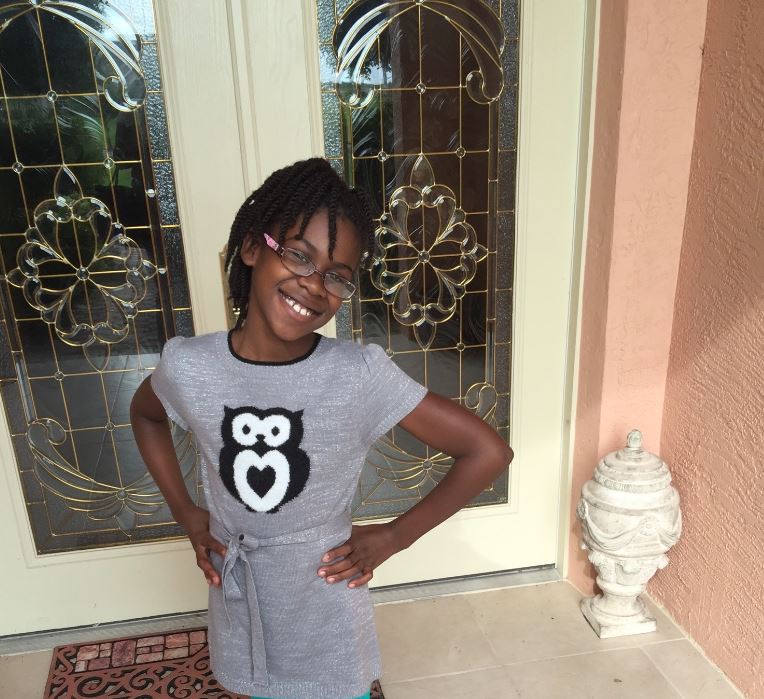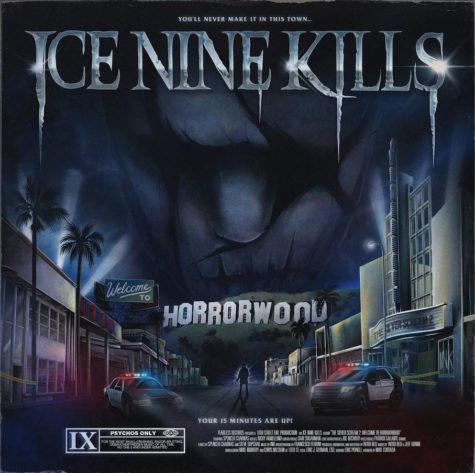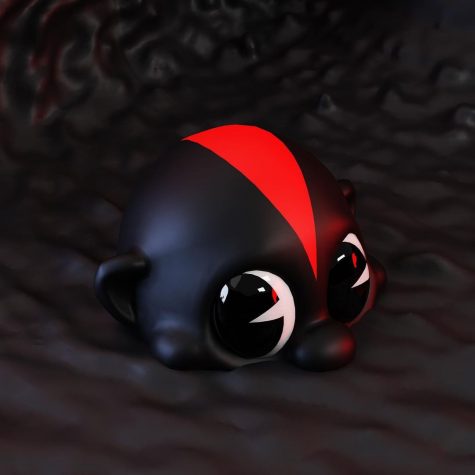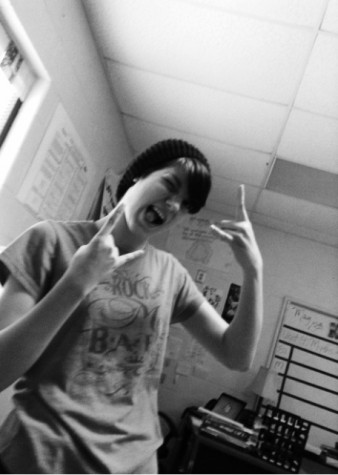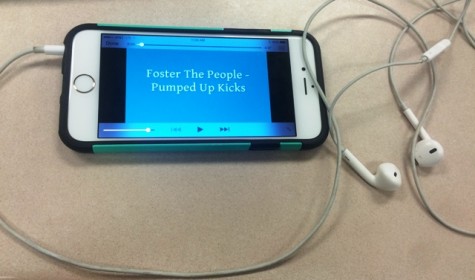Taylor Swift Comes “Out of the Woods” in her Revealing Fifth Album
Stocked full of Polaroids, Taylor Swift’s new album 1989 relays a more intimate portrait of her life and her budding independence.
December 10, 2014
World famous and fresh-faced, Taylor Swift released her newest album on October 27, 2014. 1989 is a perfect blend of modern pop music and alternative. Its energetic songs like “Shake it off” and many more rocked the music society and encouraged excitement in listeners everywhere. This record surprised many people due to Swift’s previous albums. Taylor Swift and Fearless held acoustic country aspects, while Speak Now and Red possessed more pop influences. Despite these adjustments, Swift received avid praise for her album in the form of millions of sold copies. And it’s no wonder; her songs are gold.
Swift’s inviting first track, “Welcome to New York”, displays the many wonders of the Big Apple. Taylor Swift belts out, “Welcome to New York/ it’s been waiting for you,” in her chorus while singing about the yearning N.Y.C. has for her cosmopolitan listeners. The song starts out with a clapping sound and a synthesizer chopping out a catchy beat. Then, her smooth voice says, “Walking through a crowd/ the village is aglow/ kaleidoscope of loud heartbeats/ under coats/ everybody here wanted something more/ searching for a sound we hadn’t heard before.” She explains the night life and the constant dancing in the huge city. In her next verse, she sings, “When we first dropped our bags/ on apartment floors/ took our broken hearts/ put them in a drawer/ everybody here was someone else before/ and you can want who you want.” The many responsibilities and privileges of living in this American city convey themselves in the second verse. As always after a thought provoking verse, Swift dives into the energetic chorus, “Welcome to New York/ it’s been waiting for you/ welcome to New York/ welcome to New York/Welcome to New York/ it’s been waiting for you/ welcome to New York/ welcome to New York.” Although repetitious, the chorus makes anyone listening want to dance and travel to this world-famous city. “Welcome to New York” creates a very good hook for the 5th album of Taylor Swift.
The sarcastic second track, “Blank Space” jokes with the world about her notorious reputation as “boy crazy”. She recalls her many past partners who failed in their relationship by saying, “Saw you there/ and I thought/ oh my God/ look at that face/ you look like/ my next mistake/ love’s a game/ wanna play?” Swift reveals the many rumors the media and society have spread about her former relationships. Also, she uncovers her ability to manipulate or sway men to fall for her even if it’s just for a short while. Her fiery chorus begins with her famous voice singing out a very satirical piece, “Got a long list of ex-lovers/ they’ll tell you I’m insane/ but I got a blank space baby/ and I’ll write your name.” Charmingly, Swift amuses the listeners with her explanation of how she acts around potential partners. She says that she’ll change herself to appease him for a little while, but she theatrically rings out the horrific end to their relationship, “Screaming, crying, perfect storms/ I can make all the tables turn.” This foreshadow to the end tells the untold stories of the many breakups she goes through in reality. Following the tragic second verse, the chorus swings back in with a breath taking melody that many know so well. The bridge thunders into play with Taylor’s low, strong voice belting out, “Boys only want love if it’s torture/ don’t say I didn’t/ say I didn’t/ warn ya.” This warning stands out in the whole track because of its sudden intensity and bold sound. Then, Swift wraps up the tune with the familiar beat of the chorus to end the song on a more cheerful, light note.
The third flowing song is “Style”. A guitar strums a dramatic, energetic rhythm then is accompanied by a thumping bass. “Midnight/ you come and pick me up/ no headlights/ long drive/ could end in burning flames/ or paradise,” starts the track with rebellious and wild flare. Here she brings out a person who she cannot resist and falls back to every time. Even though he might not influence her to do the right thing, he makes her feel alive and awake. Despite their troubles and roller coaster-like relationship, in the chorus she sings, “And when we go crashing down/ we come back every time / ‘cause we never go out of style.” In a swaying beat like the constant swing of a pendulum, the chorus rings out the lovers’ classic connection and timeless love. The second verse reveals their lenient, rocky relation with the lines, “I say I heard that you been out and about/ with some other girl/ he says/ what you’ve heard is true but I/ can’t stop thinkin’ ‘bout you/ and I/ I said I’ve been there too/ a few times.” Like the dunes and the tides, the two always drift apart but fall back together. Their cheerful ending is concluded with the classical 1960’s themed chorus.
The fourth track on the album, “Out of the Woods”, is currently climbing its way to the top of the music charts. Starting with the lead of choppy echoes by male backup singers, Swift eases into her beginning verse, “You took a Polaroid of us/ then discovered/ the rest of the world/ was black and white/ but we were in screaming color.” She notifies listeners about her past moments in a loving relationship, and how she and her lover discover they are so much more alive than the rest of the world. Then, Taylor lowers her voice and quickens it for the intense chorus which repeats, “Are we out of the woods yet?” several times and then repeats, “Are we in the clear yet?” before ending with a cheerful, “Good!” Swift discloses to the music world that she and her boyfriend find themselves in a tough situation and must come out of it together. Next, she tunes out her second verse, “To move the furniture so we could dance/ baby, like we stood a chance/ two paper airplanes flying/ flying/ flying.” Taylor reminisces on a light, cheery moment in their lives, but she questions herself as she slides into the tribal sounding chorus. The meaning behind this song is very profound and paints the picture of a young couple who has troubles and hardships in life and with each other. A theatrical, tragic bridge follows retelling a car accident that led to a temporary break up. She soon realizes that her fears were imaginary, and she belonged with him. After a pre-chorus sung by male singers, a lengthy version of the chorus explodes into an effective, powerful finale.
On the fifth track, “All You Had To Do was Stay”, a bubbly techno beat sounds in the background with “hey” being sung by a female backup singer, probably Swift herself. Thinking about her ex, Swift realizes how selfish and fake he was during their time together. She belts out her sorrow with the words, “People like you always want back/ the love they gave away/ and people like me/ wanna believe you/ when you say you’ve changed.” Taylor admits almost scornfully that she would have done anything for him, but he did not appreciate her love and threw it away. Later on, he wants her back, but she rejects him, knowing it would only be a repeat of the previous actions in the chorus by saying, “Stay/ hey/ now you say you want it/ back/ now but it’s just too late.” Then, Taylor blatantly tells him to leave and abandon his act of groveling for her forgiveness: “But people like me are gone forever/ when you say goodbye.” Following the final words of the second verse, Taylor heightens her pitch and pours out the first word of the chorus. In the bridge, Swift blames her significant other for the destruction of their connection with the accusations, “Let me remind you this was what you wanted/ you ended it.” With that section of pure anger and hurt, Taylor Swift blasts into the final chorus and crescendos into a high-pitched, soft note.
Taylor’s energetic sixth track, “Shake it Off”, takes the number one spot on the music charts and radio stations. With a small band intro by lively drums and tuba-like wind instruments, Swift bursts into her beginning line, “I stay up to late/ got nothin’ in my brain/ that’s what people say.” Her playful beat recalls all the rumors and false information said about her by the general public, but she shrugs it off in her pre-chorus and inspires people to disregard false accusations. She repeats the end word to every line in her chipper chorus like the famous line, “Baby I’m just gonna shake, shake, shake,” and ends with a prominent, “Shake it off/ shake it off.” Drawing out the last words she shouts, “I never miss a beat/ I’m lightning on my feet/ and that’s what they don’t see/ mmm-mmm.” Returning to the familiar beat, Taylor sings out the repetitive chorus. The bridge invites the listeners to worry no more about the terrible people of the world and tells of an incident in which Swift used this method. She dramatically spits out, “My ex-man brought his new girlfriend/ she’s like/ ‘oh, my god!’/ but/ I’m just gonna shake.” After going through the exciting verse, Taylor shakes it off one last time and ends with a farewell by the aforementioned wind instruments.
Swift’s breath-catching seventh track, “I Wish You Would” pours out a late confession regarding a love gone astray. She throws her past recounts of lost loves aside in this pop-centric mix. The song begins with streaks of sound which culminate in a flurry of laser pounds and drums as her contrastingly fluid voice describes the setting: “Windows down/ you pass my street/ the memories start.” Dashing out generous portions of details to her listeners, Swift paints the scene of a lover’s 2 a.m. drive and the familiar need to brush the past aside to which her young audience can painfully relate. In a breathless account of her wishes, Swift surges into her electric chorus: “I wish you would come back/ wish I never hung up the phone like I did/ wish you knew that/ I’ll never forget you as long as I live/ wish you were right here/ right now/ it’s all good/ I wish you would.” As the drums descend once again and then return, Swift describes her room at 2 a.m. as headlights pass and she is reminded of her wasted relationship. It can be assumed that coincidentally the two ex-lovers both long for each other on the same stretch of street at the same time. Swift nearly laughs in her elated description of their crooked relationship and its pull on the boy to come back to her. The resolution of the song occurs when the two are symbolically reunited at 2 a.m.: “See your face/ hear my voice/ in the dark.” While she admits that the crooked state of their affection made him want to run and hide, this time Swift says, “but it made us turn right back around.” This song offers a lovely alternate ending to the multiple tragedies of Taylor Swift’s notorious love life. Or, perhaps between albums Swift experienced such a satisfying return to love. Either way, her song evokes joy and relief in the listeners, infinitely refreshed by Swift’s spirited plot twist.
The eighth track of 1989, “Bad Blood,” begins with chants as one voice fades into multiple ones to emphasize the state of Swift’s relationship. As Swift criticizes her (presumed) lover, her voice turns sour and almost hisses with a spunky anger characteristic of her past vengeful anthems. The lack of music other than the bass emphasizes this tone as Swift’s voice soars into the sky,“It’s so sad to think about the good times, you and I…,” and then swiftly swoops back down into the beginning chorus. As she admits to their problems and inability to solve them, Swift exposes a different emotion than her traditional love loss songs convey. In fact, her spitfire attitude is present in the next few songs and brings about an unfamiliar air of confidence and sense of peace with her situation that is both soothing and uplifting. She continues to questioning him- “Did you think we’d be fine?”- and accusing him of stabbing her in the back and creating wounds which still fester and pain her. And despite Swift’s repetitive references to injuries and blood, she seems to unapologetically enjoy calling him out and acknowledging her pain as if she has come to terms with it throughout this song. Her playful and high-spirited attitude suggests that what she’s saying honestly doesn’t bother her because she seems to have elevated herself above his blows. As Swift reminds him that “band-Aids don’t fix bullet holes,” she lowers her voice and urges the negative emotion to flow before throwing herself right back into the chorus as if she is celebrating getting over him as she tells him this. Her revolutionary approach to this situation adds a whole other element to the functionality of her songs for her target audience.
The ninth track, “Wildest Dreams,” trickles in with a faint sound which is set off by bass, a distant thunder to the slower of Swift’s new songs. After she quotes a man and paints him into the scene with a watercolor voice, Swift expresses her thoughts: “nothing lasts forever.” As she portrays the man (“he’s so tall/ and handsome as hell/ he’s so bad/ but he does it so well”), her feelings for him bleed through her raw and rampant music. Her pitch rises with her emotion when she expresses her one condition: “Say you’ll remember me/ standing in a nice dress/ staring at the sunset, babe.” The powerful chorus swells like the waves that her West Coast inducing song conjures up in the listener’s imagination. Even though she may never see him again, Swift’s soft sighs express her bliss as she ties the song’s title into a lullaby-like lull. Her voice deepens as if the audience is wading out into the ebbing ocean with her, her spoken word illuminating glowing pictures of her relationship: “No one has to know what we do/ his hands are in my hair/ his clothes are in my room.” Soon rattles upset the smooth and shake things up a bit as if the waves of her ocean are becoming choppy as the relationship rolls on. Suddenly the ocean stands still as the music stops before a wave brings it all back ever so swiftly. Her mention of red throughout the hypnotic track draws passion into the song, and her undulating sighs convey incredible infatuation for her lover as it once rose and fell like the breaths of the sea. She seems to anticipate him leaving, but her age has finally led her to enjoy what she has in the moment, an apparent theme to this track that is reminiscent of songs such as “22” and “We Are Never Getting back Together.” Another drop in the tides occurs after bouts of echoes and a swelling crescendo buckle down into silence before a tidal wave brings the chorus back. The relationship takes its final reminiscing drink of air before its last breath out and a sigh by Swift to cut off the ocean.
The bubbly tenth track, “How You Get the Girl,” teases the listeners by beginning with Swift’s past use of acoustic guitar to aid her tracks. Popped notes and bass set the scene of a hypothetical situation with spunky syllable repetitions as Swift tells a boy what to say to, well, get the girl: “Say it’s been a long six months/ and you were too afraid/ to tell her what you want.” The upbeat mood of the song feels like the listener is skipping because the cheerful tone foreshadows a fairytale ending. Music fades out as Swift bursts out the news, “That’s how you get the girl,” and the chorus ensues with drums and a thumping bass which fade quickly into her nostalgic use of acoustic guitar. As drums return like skipping stones, Swift uses her nifty skill of familiarity by spooning out heaping details and personal tidbits for the listener to savor. It can be presumed that Swift wants boys to have said these things to her in the past after her unfruitful relationships. However, this experience comes to aid her as she can perfectly describe what it takes to win over someone you have left. During many transitions of silence and booms, Swift takes a stab at the boy by relating his inability to explain things to her. But the perkiness of the song continues as the strums faithfully return: “Remind me how it used/ to/ be/ be/ with pictures in frames/ of kisses on/ cheeks/ cheeks” and invoke undeniably relatable memories in the reader’s mind. The mood rises: “And say you want/ me/ me” as the background vocals chime in and Swift screams her therapeutic lyrics as countless teenagers will for years to come. The strums at the finish thread the entire ensemble together with a bow as the fateful last lyrics say with noted satisfaction, “And that’s how you got the girl.”
The iridescent, angelic eleventh track, “This Love,” lulls in like a flight over glass waters. Voices sweep in and encircle the song with rises and falls resembling a waterfall’s journey. Swift’s voice is water, piercing with soft diction and the creation of high tides in her flawless rises in pitch: “Skies grew/ darker/ currents/ swept you out again.” The pain in Swift’s upheld voice is felt through its rawness. She can be pictured crying in a similar scene as one from her “Back to December” music video. Currents sweep the listener in and out of a tumultuous yet thriving relationship as echoes and whispers place the listeners in a cistern by the ocean: “In silent screams/ and wildest dreams/ I never dreamed/ of this.” Similar in a way to “Haunted,” “This Love” uses deep contrasting tones to create a dramatic longing for the subject. The tone is fluid and peaceful but at times is tossed and turned to create the mood of a gripping bed time story, eyes soft but ears hooked as the chorus ensues: “This love is alive/ back from the dead/ these hands had to let it go free and/ this love came back to me.” The motif of light is evident in several verses as the listener feels guided through a dark forest or alongside a blackened ocean with lyrics such as, “This love is glowing/ in the dark,” and, “lantern burning/ flickered in my mind/ only you/ but you were still/ gone/ gone/ gone.” The end of the song summons crashing waves in clashes and drums as multiple voices surround the listener like omnipresent angels: “Your smile/ my ghost/ I fell/ to my knees.” Swift’s success is evident in the second crescendo of the song’s ending when she triumphs over her returned relationship.
The retroesque twelfth track, “I Know Places,” begins with the nostalgic noise of a tape recorder beginning. No sounds but those of Swift and piano start the track, but soon the pop revolution overthrows the reminiscence as booms of bass, beats of drums, and crashes of clashes ring through the listener’s ears. Swift becomes agitated and angry quickly as the song continues: “I can hear them whisper as they pass by/ it’s a bad sign.” This track is comparable to hip hop as Swift conquers a more spoken than sung lyrical experience. Her use of the word “damn” conveys her irritability in regards to the assumed paparazzi who are closing in on her relationship: “bruised lips sink ships all the damn time/ not this time.” This assumption seems pretty convincing judging that the average person probably knows Swift’s relationship timeline better than their best friend’s. Swift seems dominant in this song, as opposed to others that convey a previously endearing dependency, such as “Love Story” and “Forever and Always.” She seems proud and exhilarated at the fact that she can now do the protecting and take control: “They are the hunters/ we are the foxes/ and we run…I know places we won’t be found/ and they’ll/ be/ chasin’ their tails/ trying to track us down.” A deep piano cuts the song and the tape recorder stops as Swift leaves her listeners with a victorious medal.
The soulful finale of Swift’s fifth album, “Clean,” brilliantly exposes her newfound ability to cross the bridges of old relationships into a frontier of self-righteousness and contentment. The entire song is the embodiment of an experimental crisp bliss as Swift keeps you with her the entire time and builds from scratch a scene which surrounds you in water and glass and victory. The title relates to the clean feeling of the song, a pop but suave story of a triumphant dealing with a breakup: “the drought was the very worst/ when the flowers that we’d grown together/ died of thirst.” Similes, metaphors, and idioms speckle the song with relatable and tangible details. As the chorus shoots in for the first time with the first lyric, “rain,” the listeners are sprayed with clashes and a paradox as sighs and emotion flood the setting. Raw descriptions of pain set off by soothing sighs further convey the paradox of the song. As silence and the addition of voices allow Swift’s words to be emphasized with variety throughout the song, the pings and human musical instruments allow the emotion to be felt. As Swift has finally embraced the rain by the end of her album, “When I was drownin’/ that’s when I could finally/ breathe,” the listener learns also to come to terms with what will be. The last lyric fatefully claims, “Think I’m finally clean,” as Swift’s monumental fifth album and its lessons of contentment and independence concludes.


